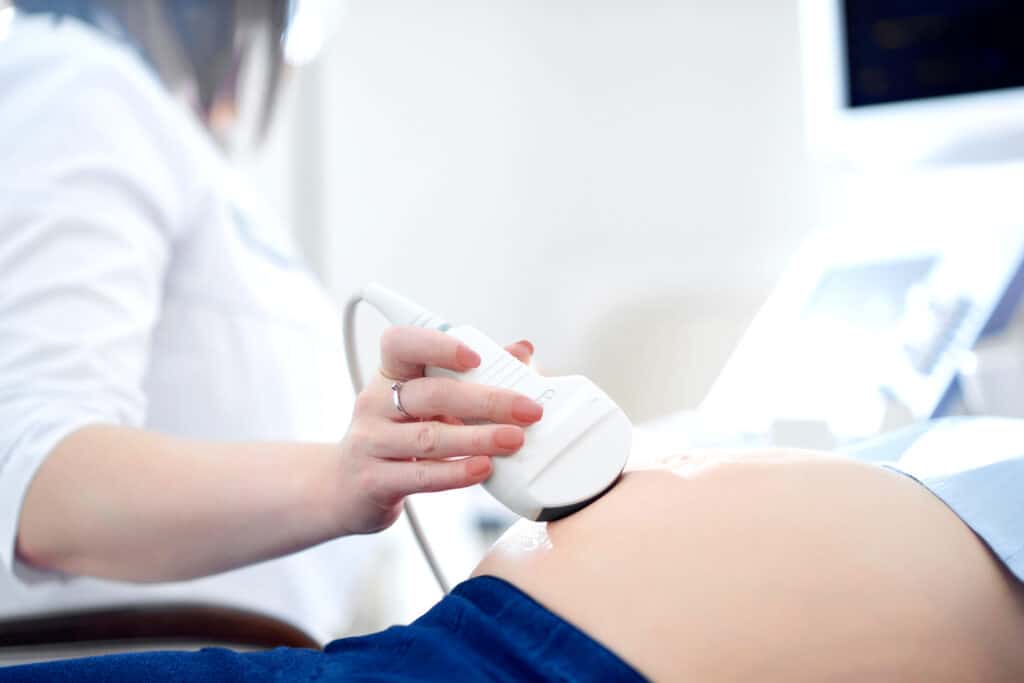11 Reasons You’re Spotting Before Your Period
Every woman expects to bleed during her period. But what if there’s a little blood in the middle of your cycle or days before your period? Is there something wrong? Should you visit your doctor?
What you’re seeing is probably “spotting” and is typically harmless.
What Is Spotting?
Spotting is light bleeding from the vagina. The bleeding may be a few spots (hence the name), or it may be a very light flow. Spotting occurs in between periods.
While similar to your period, spotting is much lighter and is often short-lived. In most cases, the bleeding stops in just a few hours or days.
The color of the blood may be pink, red, or brown, depending on the age of the blood.
2 Types of Spotting
There are two main types of spotting that most women experience before their periods: brown and pink.
Brown Discharge Before Period
Seeing brown discharge, or spotting, before your period can be concerning. You may be used to seeing brown-colored vaginal bleeding at the end of your period – not before it.
The color of the discharge is easily explained. The longer the blood stays in the body, the darker it becomes. Aged blood is brown.
Light brown bleeding before the period may be the result of ovulation, birth control, or menopause.
Dark brown vaginal bleeding before the period may also be harmless, but it can also be a sign of something more severe in some cases. Typically, the spotting will also be accompanied by other symptoms.
Pink Discharge
Pink spotting, or discharge, typically means that the blood is fresh. Many women see this type of discharge before starting their periods, but it is also common to see pink spotting between cycles.
Like with brown discharge, pink discharge is usually no cause for concern. Sometimes implantation bleeding can cause bleeding before your menstrual cycle. But there are instances where spotting between periods may be an indication of an underlying problem.
11 Causes for Spotting Between Periods
Whether you’re spotting 3,4,5,6 days before your period or bleeding 1,2 weeks before your menstrual cycle, you may be concerned that something is wrong.
The good news? In most cases, the discharge or spotting you’re experiencing is nothing to be concerned about. We’ll talk about the most common causes for spotting before your period and when you should see a doctor.
You Just Started Your Period
Bleeding between periods may mean that you miscalculated your cycle, or you have an irregular cycle, and you are just about to get your period. This is prevalent in girls who just got their periods. In the first few years, their cycle will likely be irregular until it stabilizes.
And to make it even more challenging to get a handle on your period, you may get some light bleeding here and there in between your irregular periods.
During those first few years of menstruating, your body is still trying to figure things out. Sometimes, the lining of the uterus starts to shed at the wrong time of the month. Hence the menstrual bleeding starts earlier.
Birth Control

Birth control alters your hormone levels, which can make your body do unusual things – like experience abnormal uterine bleeding when it’s not supposed to.
Spotting is very common with IUDs, particularly within the first six months of having one inserted. Both hormonal and copper IUDs cause spotting.
If you’ve just started or stopped taking the pill, you may also experience spotting. Birth control boosts estrogen levels to keep the lining of the uterus in place.
If birth control is the cause of your abnormal uterine bleeding, your symptoms should clear up in one to three months. If this persists, then contact your healthcare provider to examine the situation.
Also, if you missed your birth control pill, you may get some spotting over the next few days. Emergency contraceptives can also cause spotting.
Pregnancy
Yes, pregnancy can cause spotting. When the fertilized egg attaches itself to the uterine lining, it can cause light bleeding, known as implantation bleeding. This is also known as breakthrough bleeding, and it should disappear after the first trimester. If you are experiencing heavier flow than implantation bleeding, then contact your healthcare provider. You could be having a miscarriage or other health issues with your uterus.
Pink spotting or discharge may be the first sign of pregnancy. Implantation typically occurs 10-14 days after conception.
You may also experience slight cramping or pain in addition to the bleeding. But the bleeding is very light and lasts for only a short amount of time.
Ectopic Pregnancy
Ectopic pregnancy or extrauterine is when the fertilized egg attaches to the fallopian tube instead of inside the uterine lining. Reports show that for women who experience this, in more than 90% of cases, the egg implants in a fallopian tube. It can cause life-threatening bleeding and needs immediate medical attention.
Signs and Symptoms
Most commonly, an ectopic pregnancy occurs and is detected within the first few weeks after conception. Some women are asymptomatic and don’t have any pregnancy symptoms, and the only way to find out is by taking a home pregnancy test.
Causes and Risk Factors
Damaged fallopian tubes are usually the cause of such pregnancy. They might be keeping the egg from getting into your uterus. Although the exact cause is unknown, here are some conditions that increase the risk for it.
- You have a pelvic inflammatory disease (PID)
- If you smoke cigarettes
- You are older than 35
- You have a sexually transmitted infection
- You have scarring from pelvic surgery
- You already had an ectopic pregnancy
- If you tried to have a tubal ligation (tubes tied) or tubal ligation reversal
- When fertility drugs are used
- If you had fertility treatments such as in-vitro fertilization (IVF)
- You have an intrauterine device (IUD) for birth control, but you got pregnant
Diagnosis
If you are bleeding between periods, your doctor will do a pregnancy test and a pelvic exam. If such pregnancy is detected, then the two following medically reviewed treatments are available.
Medication
If this condition was detected on time and your pregnancy isn’t far along, your doctor can give you a shot of methotrexate. This treatment will stop the cells from growing, and eventually, the body will remove them spontaneously. You might feel some cramping in your uterus and pelvic pain, but this will resolve within a week.
Surgery
On the other hand, if your pregnancy has advanced, laparoscopy will be the only option. This is done by inserting a thin, flexible tube that will remove the embryo. If your fallopian tube is damaged too, then they might need to remove it too. If you experience a lot of vaginal bleeding after the surgery, your doctor will need to check for any remaining tissue inside your uterus.
Stress

Stress can wreak havoc on your system overall. It can cause heavy vaginal bleeding between your periods, or it might be light but recurring spotting similar to implantation bleeding. It can cause your cycle to become irregular, too. That can lead to a vicious cycle of stressing out about your period being unstable, and so on.
When you’re stressed, your cortisol increases. This hormone causes the body to release less progesterone and estrogen, which messes with your cycle. With your hormone levels out of whack, your periods may be irregular, or you may get some spotting in between your periods.
It is vital to make some lifestyle changes if you are experiencing such menstrual bleeding because it may create polyps and is hurting your whole reproductive system.
Uterine Fibroids
If you’re also experiencing other symptoms, like pelvic pain, heavy bleeding, and pain during sex, the problem may be uterine fibroids.
Don’t panic – fibroids are very common. Some experts estimate that 70%-80% of women will have fibroids at some point. And there are plenty of treatments available to help manage the condition.
Common symptoms of uterine polyps include:
- Pressure and pain in the pelvis
- Heavy bleeding during your period
- Urinary incontinence
- Pain during sex
- Constipation
- Anemia
- Pain in the legs
- Enlarged abdomen
Talk to your doctor if you think fibroids may be the cause of your spotting.
Polycystic Ovary Syndrome
Polycystic ovary syndrome (PCOS) is a condition that affects a woman’s hormone levels. It may cause regular spotting from your uterus that resembles implantation bleeding when you aren’t pregnant at all.
PCOS causes your system to produce more of the male hormones than the female. Such imbalance causes your system to skip menstrual periods.
It also increases hair growth on the face and body while making the hair on the head fall. Long-term health problems include heart problems and diabetes.
Possible medically reviewed treatments for PCOS include Birth control pills and diabetes drugs. These help combat insulin resistance and balance out your hormones.
PCOS affects women from 15 to 44 mostly, and some of them aren’t even aware. The reproductive organs that produce estrogen and progesterone and affected by PCOS and can no longer regulate the menstrual cycle.
The follicle-stimulating hormone (FSH) and luteinizing hormone (LH), produced in the pituitary gland, control ovulation. The PCOS affects the ovaries and ovulation and completely disrupts the natural flow of your month-to-month cycle. The main features of PCOS are:
- cysts in the ovaries
- high levels of male hormones
- irregular or skipped periods
In PCOS, many tiny, fluid-filled sacs grow inside the ovaries. The word “polycystic” means “many cysts.” These sacs are follicles filled with immature eggs. The problem is that these eggs never mature, but they stay dormant and disrupt ovulation. If these were to mature correctly, each one would trigger ovulation, and the process would be balanced.
When a woman’s ovulation process is disrupted, the levels of estrogen, progesterone, FSH, and LH are all imbalanced. The progesterone or the female hormone is lowered while the androgen levels are higher than usual. The androgen hormone is a male-dominant hormone that stops your menstruation bleeding altogether.
In such a state, instead of getting regular periods, you may not bleed at all, or it may be light, just like implantation spotting that you notice on the toilet paper when wiping.
Thyroid Hormone Problems
Thyroid hormones can cause health issues and also mess with your menstrual cycle, and cause spotting that looks like implantation bleeding in between periods. A slow thyroid, better known as hypothyroidism, can also mess with your body temperature and your metabolism.
This condition left untreated is serious in the long run. Thyroid issues are easily managed with medical products.
Common medically reviewed symptoms of thyroid issues include:
- Unexplained weight loss or gain
- Swelling in the neck
- Heart rate changes
- Mood or energy changes
- Hair loss
- Difficulty regulating body temperature
- Constipation
- Irregular periods
- Brittle nails and dry skin
Ovulation
If you see light spotting, ovulation may be the cause. While it sounds unusual, ovulation can cause some bleeding and cramping.
Ovulation occurs about halfway through your cycle. Along with spotting, some women may experience pain on one side. When the blood mixes with your cervical fluid, it can cause the discharge to appear pink, red, or brown.
If you’re spotting two weeks before your period, then it’s likely ovulation that’s causing the bleeding.
Don’t freak out! Ovulation spotting is a good sign and indicates that you’re ovulating as usual.
However, to distinguish light ovulation spotting from a more severe health problem, you will need to calculate the exact length of your menstrual cycle. Women that have a 31-day cycle will bleed on a different day than those with a 28-day cycle. Many apps can help you accurately track your cycle.
Injury
In some cases, injury can be the cause of spotting. The opening of the uterus or the cervix can be sensitive and will bleed a little if manipulated or touched. Some women are more sensitive than others, which can make them more prone to bleeding.
Aggressive intercourse or a pap test may be all it takes to injure the cervix or opening of the uterus. Even riding a bike or a horse causes spotting for some.
In most cases, this type of injury causes brown or red spotting. If the spotting occurs the same day as the injury, it will likely be red, but the blood may be brown if the spotting occurs a few days later.
Sexually Transmitted Disease or Infections
Infections can also cause spotting in between periods, such as gonorrhea, chlamydia, and bacterial vaginosis.
If an infection causes spotting, a trip to the doctor is in order. In many cases, these conditions can be cured with a round of antibiotics.
Please note that about 75% of women will experience no symptoms of chlamydia. In fact, bleeding in between periods is one of the least common symptoms of this sexually transmitted infection.
As for gonorrhea, the most common symptoms in women include:
- Vaginal discharge
- Painful urination
- Bleeding in between periods
Common bacterial vaginosis symptoms include:
- Abnormal vaginal discharge
- A “fishy” or foul odor
- Spotting in between periods
If you’ve been having unprotected sex with multiple partners, it’s necessary to get tested for STIs to ensure you’re not infected. While not a common symptom, these infections can cause spotting or heavier bleeding in between periods.
If an STI is left untreated, it can lead to complications, including infertility. You can successfully cure most infections with a simple round of antibiotics.
When to See a Doctor

In most cases, spotting – whether pink, red or brown – is no cause for concern whether it occurs before or after your period.
But if you’re worried about the spotting, see your doctor and make sure there’s no underlying cause. Sudden changes to your cycle indicate that something is going on, so let your doctor know about these changes.
If you experience any of the following, seek medical service immediately:
- Spotting that continues for three or more menstrual cycles
- Heavy bleeding that lasts more than three days
- Heavy bleeding after sex
- Bleeding that occurs every three weeks or more frequently
- Bleeding after menopause
- Any abnormal bleeding
If you notice any of the symptoms above, make an appointment with your doctor as soon as possible. They will determine what’s causing your symptoms and help you find an appropriate treatment option.

